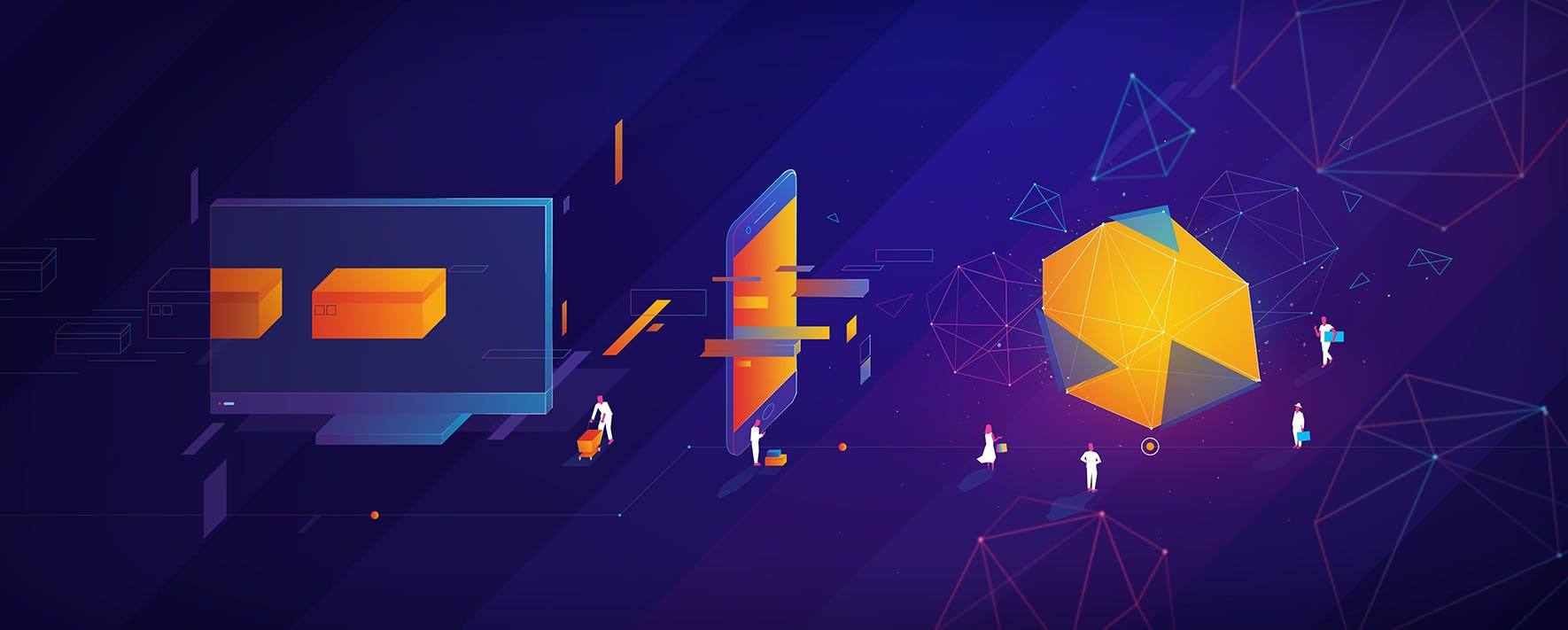Blog
Where Does Saleor Fit in the Evolution of E-commerce?

The next generation of e-commerce solutions has arrived.
- Saleor 2.0 rides the third wave of e-commerce solutions, going beyond the boundaries of typical mobile-first solutions
- GraphQL-first headless e-commerce is a technology game-changer, allowing modularity, faster response, and instant impact on performance
- PWA storefronts are currently the exception but will soon be the norm
Like most things, e-commerce comes in waves—and right now we are experiencing the third generation of online retail solutions. When the first e-commerce platforms were introduced in the 1990s, it was enough to provide a storefront to be ahead of competitors (any old store at all would do). In the second wave, it became necessary to provide a mobile option so users could shop on mobile devices. To catch the third wave, which is breaking right now, it is essential to deliver enhanced shopping experiences to customers. That is where we think Saleor fits in to the evolution of e-commerce.

Changing customer demands drive software development (and vice versa)
Customer expectations have evolved along with technology. The mobile devices we use on a daily basis—and the logistics that support our experiences with them—have created an on-demand society where shoppers expect single-click interactions, instant purchases, and lightning delivery. At first only a few niche retailers invested heavily enough in e-commerce to offer such experiences, but it is now becoming the standard for companies from small stores to multi-billion-dollar enterprises.
Users now browse and skip from site to site faster than ever—and they rarely come back for a second look, especially if sites suffer from performance and response times and offer a less than perfect browsing experience.
Depending on the products they sell, retailers may need to grab attention and allow customers to make a purchase all within one visit, in only a matter of minutes (perhaps even seconds). If not, the sale is lost.
Harnessing all of this technology to present clients with great looking stores, with flexible payment and delivery options, is what all retailers now strive for. Being able to offer that service even when customers have no or unstable internet access—using PWAs which act like native applications on mobile devices—is the third wave of e-commerce solutions. It means that customers can shop whenever it fits into their busy schedule, and retailers never miss a sale opportunity.
PWA and GraphQL as a game-changing technologies
Our choice of GraphQL as a technology for the API that is the driving differentiator in Saleor 2.0 is an unusual choice, even for many developers who are unfamiliar with the technology.
A couple of years down the line, the use of GraphQL might not seem so revolutionary, but right now we are happy to be among the pioneers who are on trend with technology that has seen a forty-fold increase in popularity since its stable release in October 2016 and is being championed by companies like Facebook, AirBnB, Netflix or BMW. It provides a powerful and flexible alternative to REST solutions and allows us to define the structures and avoid excessive data returns, creating cleaner headless e-commerce solutions with less lagging and data sprawl. It also fits right into the Python and Django base that we defined for Saleor from the beginning.
We think that Saleor 2.0 defines the third wave of e-commerce solutions. Check out the classic demo version of our new Saleor store, and get the PWA demo experience to check out how the technology works for you.
Want to get to know Saleor better? Remember to check out our website getsaleor.com. If you have any questions, reach out to us on Twitter, GitHub or Gitter.
Related articles: